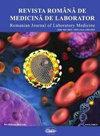The metabolic control and laboratory evaluation in patients with type 2 diabetes during the COVID-19 pandemic and the impact of telemedicine: a single-center experience
IF 0.5
4区 医学
Q4 MEDICINE, RESEARCH & EXPERIMENTAL
引用次数: 0
Abstract
Abstract Objective: The study aimed to evaluate the metabolic control during the COVID-19 pandemic in subjects with type 2 diabetes mellitus (T2DM) and whether care through telemedicine significantly impacted it. Material and methods: This was a retrospective study for which three time-periods were prespecified: the COVID-19 pandemic period, pre-COVID-19 period, and before pre-COVID-19. The following information were collected: anthropometric and laboratory parameters (glycated hemoglobin (HbA1c), blood glucose, lipid profile, creatinine, eGFR, etc.), self-measured blood glucose (SMBG), blood pressure (BP), diabetes therapy, number of on-site and of telemedicine consultations. The mean values of all available measurements for HbA1c, SMBG, BP, weight, and body mass index (BMI) were calculated. Results: During the COVID-19 pandemic, the HbA1c values increased (6.78±0.77% to 6.96±0.87%, p<0.0001; + 0.18±0.67%), despite treatment intensification (p<0.01), while BMI and total cholesterol values slightly decreased (32.01±5.5 kg/m2 to 31.7±5.4 kg/m2, p<0.0001, and 178.1±40.8 mg/dl to 170.5±38.4 mg/dl, p<0.05). The deterioration of glycemic control (to HbA1c >7%) were rather seen in males (to 7.01±0.92%, p<0.0001), patients from rural areas (to 7.08±0.96%, p<0.001) and younger than 65 y.o. (to 7.05±0.82%, p<0.001). More male patients had a mean HbA1c increase of >0.5% during the COVID-19 pandemic (32.3% vs 21.5%, p<0.05). Patients who received more diabetes care visits through telemedicine had a more attenuated increase in HbA1c (6.79±0.80% to 6.90±0.83%, p<0.05 vs 6.76±0.72% to 7.08±0.92%, p<0.0001). Conclusions: The glycemic control slightly deteriorated during the COVID-19 pandemic (but with overall HbA1c within target), with certain patient categories being more affected. Diabetes care though telemedicine allowed the maintenance of the metabolic control.新冠肺炎大流行期间2型糖尿病患者的代谢控制和实验室评估及远程医疗的影响:单中心体验
摘要目的:本研究旨在评估新冠肺炎大流行期间2型糖尿病(T2DM)患者的代谢控制情况,以及远程医疗护理是否对其有显著影响。材料和方法:这是一项回顾性研究,预先确定了三个时间段:COVID-19大流行期、COVID-19前期和COVID-19前期之前。收集以下信息:人体测量和实验室参数(糖化血红蛋白(HbA1c)、血糖、血脂、肌酐、eGFR等)、自测血糖(SMBG)、血压(BP)、糖尿病治疗情况、现场和远程医疗会诊次数。计算所有可用测量的HbA1c、SMBG、BP、体重和体重指数(BMI)的平均值。结果:新冠肺炎大流行期间,男性HbA1c升高(6.78±0.77% ~ 6.96±0.87%,p7%),男性升高(7.01±0.92%,p0.5%) (32.3% vs 21.5%, p<0.05)。通过远程医疗就诊的糖尿病患者HbA1c升高幅度更小(6.79±0.80% ~ 6.90±0.83%,p<0.05),而6.76±0.72% ~ 7.08±0.92%,p<0.0001)。结论:新冠肺炎大流行期间血糖控制略有恶化(但总体HbA1c在目标范围内),部分患者类别受影响较大。糖尿病护理通过远程医疗可以维持代谢控制。
本文章由计算机程序翻译,如有差异,请以英文原文为准。
求助全文
约1分钟内获得全文
求助全文
来源期刊

Revista Romana De Medicina De Laborator
MEDICINE, RESEARCH & EXPERIMENTAL-
CiteScore
0.31
自引率
20.00%
发文量
43
审稿时长
>12 weeks
期刊介绍:
The aim of the journal is to publish new information that would lead to a better understanding of biological mechanisms of production of human diseases, their prevention and diagnosis as early as possible and to monitor therapy and the development of the health of patients
 求助内容:
求助内容: 应助结果提醒方式:
应助结果提醒方式:


